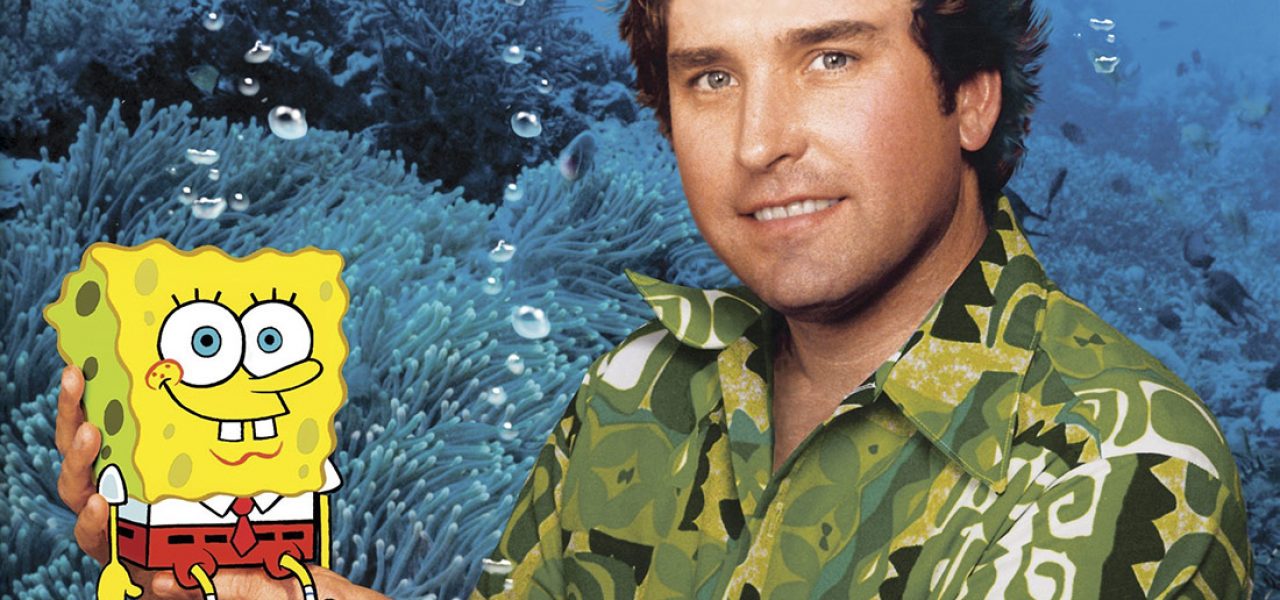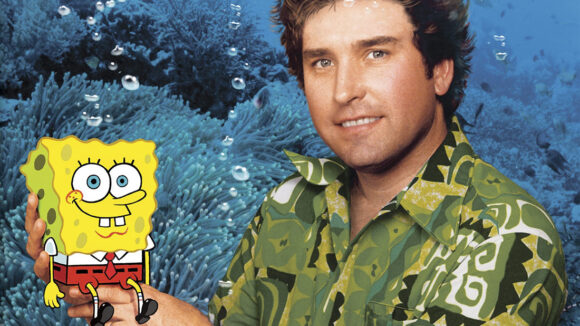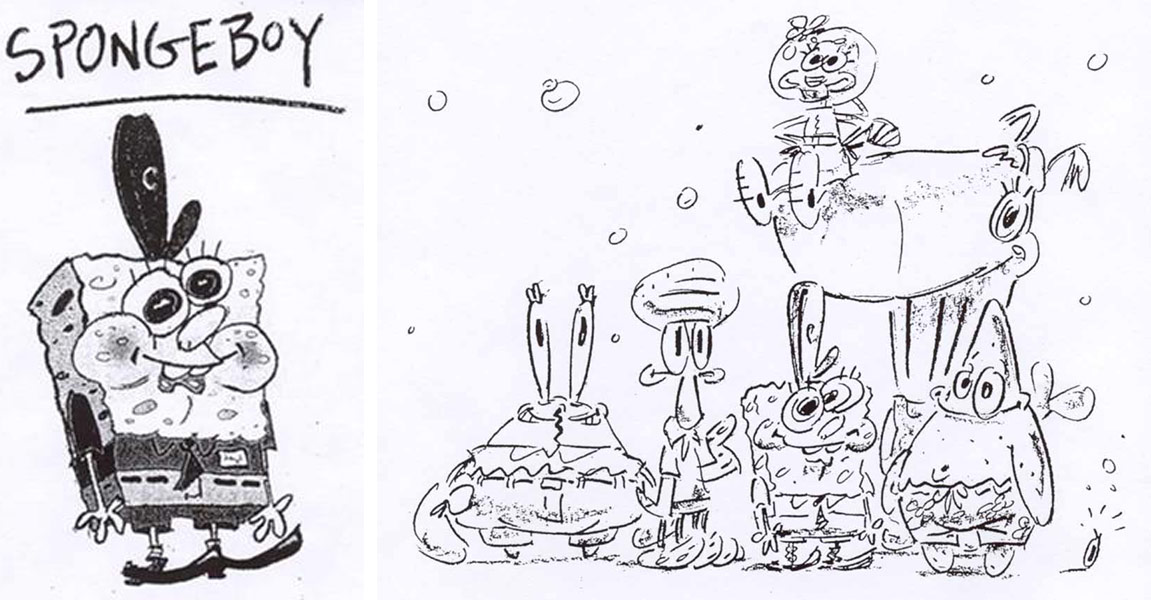

Stephen Hillenburg, Creator Of ‘Spongebob Squarepants,’ Dies At 57
Spongebob Squarepants creator Stephen Hillenburg died on Monday at the age of 57. The cause of the death was the neurodegenerative disease ALS.
Hillenburg revealed publicly last year that he had been diagnosed with the disease. In April of this year, He was honored with a special Emmy Award for “his contribution and impact made in the animation field and within the broadcast industry.”
“We are incredibly saddened by the news that Steve Hillenburg has passed away,” Nickelodeon said in a statement. “He was a beloved friend and long-time creative partner to everyone at Nickelodeon, and our hearts go out to his entire family. Steve imbued Spongebob Squarepants with a unique sense of humor and innocence that has brought joy to generations of kids and families everywhere. His utterly original characters and the world of Bikini Bottom will long stand as a reminder of the value of optimism, friendship and the limitless power of imagination.”
Born Aug. 21, 1961, in Lawton, Oklahoma, Hillenburg took an unlikely path to creating one of the most successful American animated series of all time. He attended Savanna High School in Anaheim, California, where he remembered, “I would have teachers in high school say, ‘You should just draw fish.'” Instead of pursuing art, he went to Humboldt State University in northern California to study science, graduating in 1984 with a bachelor’s in Natural Resources Planning and Interpretation major.
“I blossomed as a painter in Humboldt,” he said once in an interview. “I had art faculty members saying ‘Why are you studying science? You’re an artist!’ I had no idea how my interests were going to converge.”
Following graduation, Hillenburg taught marine biology at the Orange County Marine Institute (today known as the Ocean Institute) in Dana Point, California, before deciding to study animation in 1987 at Calarts. He entered the school’s Experimental Animation program, earned a master’s degree in fine arts in 1992. Along the way, he produced student films like Wormholes and Green Beret, the latter of which appeared on MTV’s Liquid Television.
While still at Calarts, Hillenburg started his professional career as an animation artist on the CBS Saturday morning series, Mother Goose and Grimm. His subsequent tv job was on the Nickelodeon series Rocko’s Modern Life, where he eventually became a director on the series.
When Hillenburg decided to create an idea of his own, he wanted to find a way to combine his passion for marine biology with animation. Earlier, he’d created a mini-comic about how tide pools work (The Intertidal Zone) while still working at the Marine Institute, and after Rocko colleague Martin Olson noticed the comic in his office, Hillenburg recounted, “It started me thinking if I’m going to do a show, I would do it about these invertebrates and these crazy animals that exist in the ocean, and it will be the perfect fusion of the things that I did.” Hillenburg tells a more complete history of how the show began in the video below, and for even deeper reading, an oral history of the series can be found here.
When he first pitched an idea for an animated series to Nickeodeon, Hillenburg called his bubble-loving, absorbent optimist Spongeboy. The key idea, he said, was “to follow the life of an innocent.” (The name had to be changed during production because The Flaming Carrot comic creator Bob Burden had already trademarked a character by that name. The “bob” in the eventual Spongebob is reportedly a reference to Bob Burden.)

The ideas was picked up as a series and premiered in 1999, but no one anticipated that the series would become a pop culture phenomenon or a cornerstone of Nickelodeon’s corporate success over the last 20 years. “I didn’t know it was going to be popular, but I knew it was going to be good,” said Spongebob’s voice Tom Kenny back in 2001. “I wasn’t prepared that it would break out of that box and be this cross-demographic phenomenon.” In fact, animation industry lore has it that a big reason for the show’s initial success was that the executives weren’t paying close attention to the production.
The studio’s resources at the time were focused on the nightmare production of Catdog, which had a much larger episode order, allowing Hillenburg and his band to fly under the radar and work in relative isolation without excessive network interference. Not that the execs didn’t try to add their input. During the production of the first season, they made demands like wanting Spongebob’s parents to be an important part of the show and wanting Spongebob to attend school (Hillenburg compromised by having Spongebob attend boat-driving school). And, as former Nick exec Brown Johnson recalled, getting the show produced wasn’t done with the complete support of the top brass: “Certain parts of the business at Nickelodeon were like, ‘Oh no. It’ll never be successful. It’s about a sponge. What’s that? It’s yellow. That’s a bad color.'”
Hillenburg believed that the atmosphere of the studio changed once it moved in 1998 into a custom-built building in Burbank, California. He described the mid-’90s atmosphere of Nick as being more conducive to the creation of a wacky concept like Spongebob: “I originally worked for Nickelodeon when we were renting offices. There’s a certain garage spirit in that environment.…There is a different atmosphere when you create a fancy building. It becomes more corporate and I think it does affect things to a degree.”
Hillenburg’s show quickly became a hit after premiering in 1999, and supplanted Nick’s previous ratings king, The Rugrats. By 2002, it was the top-rated cable show for children, the show that every other children’s animation producer was trying to replicate, and a gigantic marketing juggernaut. An article from that year highlighted a few of the ways that Spongebob was being marketed:
[Spongebob] is now [Target’s] No. 1 character property. He’s also in the shape of Cheesenips, specialty crackers that Nabisco is now stocking in such nontraditional places as college bookstores. He’s been a Burger King prize, a popular Gameboy title, and the first Good Humor ice-cream pop to outsell Snoopy. His t-shirt outsold South Park’s on music.com. He was the first milk ad to feature an animated character.
The series is currently in production on its 12th season. Over 240 Spongebob episodes have been produced through its first eleven seasons.
Spongebob also spawned two theatrical features that have grossed $465.3 million globally. The third feature, currently in production, will be released in 2020. It also inspired Spongebob Squarepants: The Broadway Musical, which recently closed after 356 performances, but will continue as a touring show across the United States in 2019.
More difficult to quantify is the far-reaching impact of the show on the popular culture: so much could be written about how the cartoon is responsible for launching thousands of memes, or how it is often targeted by attention-seeking activists, or how it is appreciated by unlikely audiences, including the Russian military, which often marches to the tune of Spongebob.
For all the massive success of his creation, Hillenburg kept a low profile, preferring to let the work speak for itself. Behind the scenes though, he was hands-on with the whole Spongebob empire, and tried to offer his input on everything from promotional artwork to marketing tie-ins like the comic book. On Twitter, Joey Weiser recalled Hillenburg’s involvement with the Spongebob comics:
Although I never had direct contact with Hillenburg, it was interesting and valuable to hear from @ChrisJohnDuffy about what kinds of jokes he did / didn’t like, his rules for each character, and general perspective on the world of Spongebob.
— Joey👻🐗Weiser (@joeyweiser) November 27, 2018
It was up to Hillenburg to allow me to eventually not only write for SB, but also draw my own stories. I was beyond excited when he gave the OK. Not just that my art could appear in the comic, but that THE CREATOR OF SPONGEBOB had said so! 💛
— Joey👻🐗Weiser (@joeyweiser) November 27, 2018
As Spongebob’s voice Tom Kenny explained, Hillenburg was deeply involved with the show’s creative process, but often stepped back and allowed the performers to express themselves as they wished, something that also held true for the visual approach of the series. “Hillenburg definitely is the big kahuna and, a lot of times, just has every vocal nuance and eye blink and twitch mapped out to the nanosecond in his mind,” said Kenny. “And then other times, he’ll just take you off the leash and go, ‘You know, I don’t know where this is going. Just take it where it feels funny.'”
According to tweets by Vincent Waller, who has held many roles on the show including creative director, Hillenburg was coming into work until recently and has expressed a strong desire to his crew for them to continue the series:
Steve continued to come in to work until recently. We were all shocked to have him go so soon. If there is anything after this life, you know Steve Hillenburg will surfing the universe on some gnarly cosmic waves.
— Vincent Waller (@VincentWaller72) November 27, 2018
Steve made clear that he loved what we are doing, and wanted us to continue. He was at our last mix session and was truly tickled by the episodes.
— Vincent Waller (@VincentWaller72) November 27, 2018
Hillenburg is survived by his wife of 20 years, Karen; son Clay; mother Nancy; brother Brian and his wife, Isabel; and nieces Emma and Hazel.
Tributes are being paid to Hillenburg on social media. “I remember watching the Spongebob pilot on repeat while developing ZIM and loving how purely and gloriously stupid it was,” wrote Invader Zim creator Jhonen Vasquez:
Very sorry to hear about Stephen Hillenburg passing away. I remember watching the Spongebob pilot on repeat while developing ZIM and loving how purely and gloriously stupid it was. Still some of the best crazy expressions in a cartoon.
— Jhonen Vasquez (@JhonenV) November 27, 2018
“This is the saddest day,” said Phineas and Ferb co-creator Dan Povenmire, who worked with Hillenburg on Rocko’s Modern Life and later Spongebob.
This is the saddest day. https://t.co/pnJ9VJRAta
— Dan Povenmire (@DanPovenmire) November 27, 2018
Codename: Kids Next Door creator Tom Warburton expressed appreciation for both the creator and the character, writing, “The world lost one of its best, most honest human beings who created one of its best, most honest characters.
The world lost one of its best, most honest human beings who created one of its best, most honest characters. Safe travels, Mr. Hillenburg. ❤️ pic.twitter.com/DYxBQiavKE
— mr. warburton (@misterwarburton) November 27, 2018
“To say that this man was talented is not enough. He was a mountain mover. He took risks, he made us laugh and he made everyone around him successful. We should all strive to live a life like that,” wrote Fairly Oddparents creator Butch Hartman on Instagram. “Steve knew it wasn’t easy but he went for it anyway. And in spite of the enormous success he accomplished he remained the same humble, sweet and caring guy he always was.”
Adam Paloian, a current director on the series, called Hillenburg a “personal hero” and “an inspiration to me since i was 7.”
Steve Hillenburg is the reason I've always given 110% on SpongeBob. He's been an inspiration to me since I was 7, and it was the greatest honor to work for him, my personal hero. What always inspired me most about Steve was his humble nature. Thanks for everything, Steve.
— Adam Paloian (@adampaloian) November 27, 2018
Skater Tony Hawk posted, “Goodbye Stephen Hillenburg, thank you for the shared laughs with my kids through the years. We’re all Goofy Goobers thanks to you.”
Goodbye Stephen Hillenburg, thank you for the shared laughs with my kids through the years. We’re all Goofy Goobers thanks to you.
— Tony Hawk (@tonyhawk) November 27, 2018
Thank you for everything Stephen Hillenburg.
You inspired me, my friends and so many people on this planet with your wacky and happy characters. I love sponge Bob a lot, I made this animation some years ago and had so much fun.Rest in peace, you will forever be missed. pic.twitter.com/xQnexAKozB
— Kéké (@Kekeflipnote) November 27, 2018
Rest Easy Stephen Hillenburg … RIP pic.twitter.com/A7YILbzaS1
— tori ☁️ (looking for internship!) (@toriisu) November 27, 2018
Goodbye Stephen Hillenburg 😢@Nickelodeon pic.twitter.com/15q60WD475
— Grand Chamaco (@SeDibujanTuits) November 27, 2018
thank you mr hillenburg for making my childhood brighter pic.twitter.com/P3XNoAWrGr
— 𝔊𝔢𝔬𝔯𝔤𝔦𝔢 𝔐𝔞𝔤𝔢𝔯 (@georgemager) November 27, 2018
thank you mr. hillenburg for creating something so contagiously funny and relentlessly genuine pic.twitter.com/Qh2VmNwUIZ
— Jackie 🎄🎁🍪 (@_itsjackielee) November 27, 2018
thank you for a wonderful childhood Stephen Hillenburg pic.twitter.com/p1PRwnHW8h
— Cy ⛈⚡⛈⚡ (@cerealkidman) November 27, 2018
If you worked with Hillenburg or if his work affected you in a meaningful way, please share in the comments.

.png)